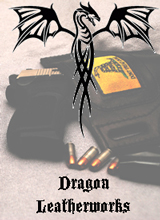So Joan made me want to make a more general gunny post. In a recent post she quotes an article that erroneously says Glocks don’t have a Loaded Chamber Indicator (LCI).
In the comments she actually approves a few who point out the claim is hooey. She prattles that she isn’t responsible as it wasn’t her fault the article was crap. Also she says this:
I linked to a video that showed that Glock’s “loaded chamber indicators” were not the same as other such guns and potentially ineffective in showing whether a bullet was still in the chamber.
And the person in the video was critical of that. Glock can do much better with their technology. And that’s what the writer of the article was saying. Just because you don’t agree doesn’t mean it is not true. We are talking about human lives here Robin. So stop your nonsensical harassment. Go troll another blog. Mine is not the place for you.
Ahh, “No True Scottsman”! Still let’s get into the bigger issue. There are a TON of LCIs on the market from Ruger’s big red flags that are downright obnoxius, to extended extractors, and witness holes. Heck a gun shop pointed out that looking beside the recoil shield for case rims is considered an LCI.
frankly I don’t like them much. I’m not AGAINST them like say Magazine Disconnects or DA guns that feel the need to ALSO put in a safety that can be engaged even when the hammer is on the half-cock notch, or the striker is at its resting position, but I generally prefer to ignore them.
Ruger’s big flag is very nice, as far as they go. It sticks way up, is a bright color, and can be physically felt. Meanwhile its still lower than the rear sight block so you don’t actually see it when you’re shooting. Still its a simple lever and spring. I’ve never seen it happen, but I can imagine that dirt or excess lubricant might gum it up to make an unloaded gun look loaded, or a worn or broken part might make the flag stay down on a chambered round. The extractors can be ambiguous, and witness holes might be miss read (say from a darker colored case, or nickle case in a stainless barrel) and when playing with mine with a bight-orange dummy round, I find myself twisting and turning the gun to get a good view and good light which can easily lean to an ignorance of Rule #2.
Still LCIs are one of the newest inventions of gun “Safety”, and generally supported by people who also don’t like making gun training an easy thing. There are tons of older guns out there with no LCI, and they are perfectly safe because YOU DON’T NEED THEM!! Simple training can solve this problem, as well as avoid the risk of misreading or malfunctioning LCIs.
A press check is VERY simple and easy to do, and there is NO ambiguity, either you see a round in the chamber, or you don’t. If you don’t it COULD be a broken extractor or a stuck round, but once you see the gun is “unloaded” you can clear the gun and visually inspect the chamber…or attempt to chamber another round which will cause a double-feed and you can then sort out why your gun is malfunctioning.
Revolvers are easier, simply pop open the cylinder and inspect all the charge holes and close up the gun. I check all my guns before I carry them, or move them.
Also here’s a little bit of philosophy for training new shooters. When I teach a brand new shooter I make sure there is a bench or table in front of them while they shoot. If your range doesn’t have a bench on the firing line a simple camp or card table can easily be brought along. Before the new shooter even gets to a firing line where there are noises and distractions I make sure they know and understand all four rules of gun safety. They don’t need to be able to rattle them off 100% verbatim, or get the order correct. They just need to show they understand that there is no such thing as an “Unloaded” gun, or any time they can be allowed to break the other rules. That the muzzle must ALWAYS be in a safe direction. The last thing they do before they fire is place their finger on the trigger, and the first thing they do once they finish a shooting string is take their finger OFF the trigger, and they will always be sure of their target and backstop, and be well aware that bullets go through things.
Once they’re on the range I don’t teach them ANY of the safety features on the guns (with the exception of drop safeties, I do make them well aware that all guns that will be used are drop safe, and if a gun is heading to the ground they simply must get out of the way and let it fall…thankfully for my gun finishes this has yet to happen), if the gun has a manual safety, I don’t inform them. If the gun has an LCI, I don’t tell them about it. If the gun is a double action, or “Safe Action” gun, I will only inform them the difference of trigger pull. I’ll also point out grip safeties because that’s necessary.
Still there’s no need to fill a new shooter’s mind with mechanical details. Just teach them to safely hold and fire the gun and keep rounds on paper. When they stop shooting the gun is simply placed on the bench. If the gun is still loaded I can deal with it from there.
I only get down into mechanical nitty-gritty with a new shooter if they inquire about it. Use of safeties and other mechanical widgets are reserved for more intermediate shooters.



Since all guns are always loaded, I have never found an LCI to be really all that useful. If I want a gun to be “unloaded”, I do the “triple check”: Check 1, drop the mag and lock the slide to the rear, the gun *should* be unloaded, but isn’t yet considered so. Check 2, visually verify that there is no magazine in the pistol and visually look at the chamber looking for a round (still not considered unloaded). check 3, physically check by feel that there is no magazine and (usually with pinkie finger), physically check that there isn’t a round in the chamber). After all that… the gun is still treated as loaded because we are humans and therefore we CAN make a mistake.
The “indicator” that HAS been useful to me is the firing pin indicator on my double action, striker fired pistol. Humans being humans, mistakes happen and in spite of what you may have heard, I am after all human like everyone else. There was an occasion where I looked down and somehow the pistol I was carrying hadn’t been decocked (probably after a press check). I had been carrying the pistol cocked (there is no safety on this particular gun other than the one integrated into the bang-switch, which I don’t consider to be a “safety” really). Was there any danger? Not really because I use a holster that positively covers the trigger guard/trigger, and live by the 4 rules. However, it wasn’t an ideal situation and it was rectified ASAP (and now I am more conscientious about decocking).
I like the LCI on my XD. It’s not brightly colored like Ruger’s (it’s the same color as the slide), nor does it pop up an excessive amount – a visual check and you might not see it, but feel down the top of the slide and you KNOW there’s a round chambered (not being visually obvious, I’d know if a round is chambered, but a bad guy is taking his chances). I feel more comfortable being able to check in complete darkness that the gun is ready to go if something goes bump in the night.
Now, I agree, new shooters don’t need to know about the mechanical details. I taught some friends how to shoot, but the only mechanical aspects I covered on that particular gun were the elements that would keep the gun from firing: namely, the grip and trigger safeties (my .22 pistol, which we started on, has neither of those). The striker indicator and LCI – while nice to have – just aren’t as important to new shooters at the range.
The Loaded Chamber Indicator is a Red Herring not a Red Flag.
No working firearm will ever have enough safety features on it to satisfy an anti-rights cultists like Joan.
You can see that in her response. Disprove her and she claims it isn’t her, it isn’t visible enough….never, never enough.